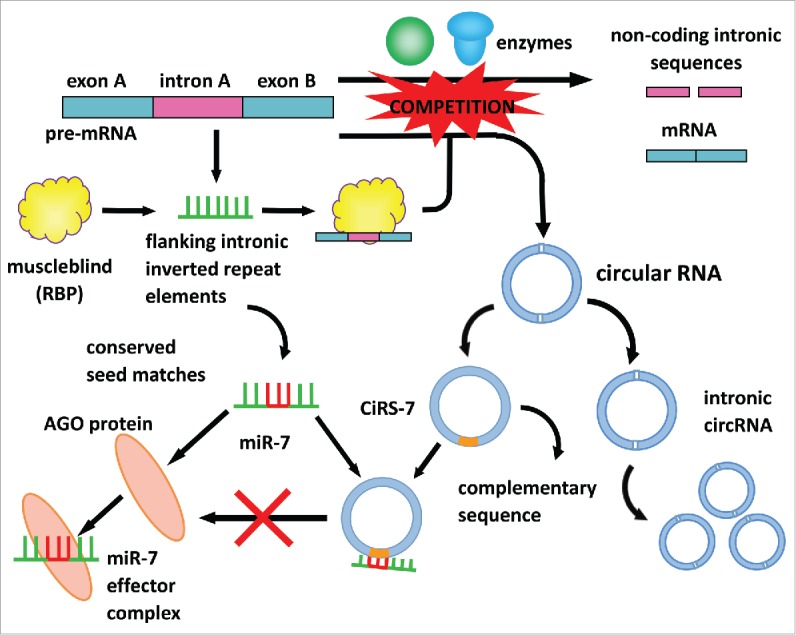Figure 1.

The biogenesis and the microRNA-sponge function of circular RNAs In eukaryotic cells, pre-mRNA comprises intermittently arranged exons and introns. Typically, under the catalysis of spliceosomal machinery or groups I and II ribozymes, exons are spliced out from introns and rejoined into mature mRNAs, while introns are metabolized in cytoplasm. On certain occasions, pre-mRNA with flanking intronic inverted repeat elements can bind with muscleblind, a type of RNA binding protein (RBP), and form a pre-mRNA-RBP complex. The pre-mRNA-RBP complex competes with pre-mRNAs as the catalytic site of spliceosomal machinery or groups I and II ribozymes and consequently is catalyzed into circular RNAs (circRNAs), including intronic circRNA and exonic circRNA. Intronic circRNA exists in the cytoplasm and can are passed on to offspring, affecting RNA-mediated inheritance and epigenetics. Exonic circRNAs function as microRNA sponges in the cytoplasm, regulating the function of microRNAs. For example, miR-7 exerts its biological function by binding with the AGO protein to form an miR-7 effector complex. A circular RNA sponge for miR-7 (ciRS-7) can harbor the conserved seed matches of miR-7 in its complementary sequence, which inhibits the formation of the miR-7 effector complex. Therefore, the function of miR-7 is regulated by ciRS-7.
